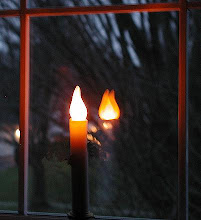If you can read the caption, it says "Villagers wearing hay bale costumes celebrate the winter festival of Malanka on January 14..."
http://www.wumag.kiev.ua/index2.php?param=pgs20064/102
... Malanka is mostly a rural feast but lately it has begun to make inroads into cities as well. Basically, Malanka is celebrated — or performed, or whatever other verb would be proper to use — in accordance to a set pattern which differs in certain details in different parts of Ukraine.
The celebrations of the Feast of Malanka begin on the night of January 14 (which happens to be the New Year’s Day by the Old Style Calendar). The central character in the celebrations is Malanka, “a girl of many talents and of exceptional beauty.” Who actually this Malanka girl was, and what she did to earn a public celebration, nobody knows for sure. All my enquires produced little result — except for some information that I obtained from some old-timers according to whom the day of January 13 is a feast day of St Malania the Roman Martyr. But evidently, it was an ancient pagan holiday of uncertain origin which was “adjusted” to the Christian ritual.
There were times when Malanka was celebrated in virtually all the villages and towns of Ukraine but these days only some places have managed to maintain the traditional Malanka celebrations. And even, as I’ve said, Malanka has begun to gain in popularity...
Mon ami canadien, Gil, who is French-Ukrainian,sent this along.
I pointed out that those rural fellows are not wearing hay stack costumes; they are actually wearing hay stacks.
Furthermore, no self-respecting young Ukrainian would be without a couple of designer hay stacks in the back of the closet, ready to don for the agricultural festivities.
I refuse to wear them because of the special cleaning required.
--


















No comments:
Post a Comment